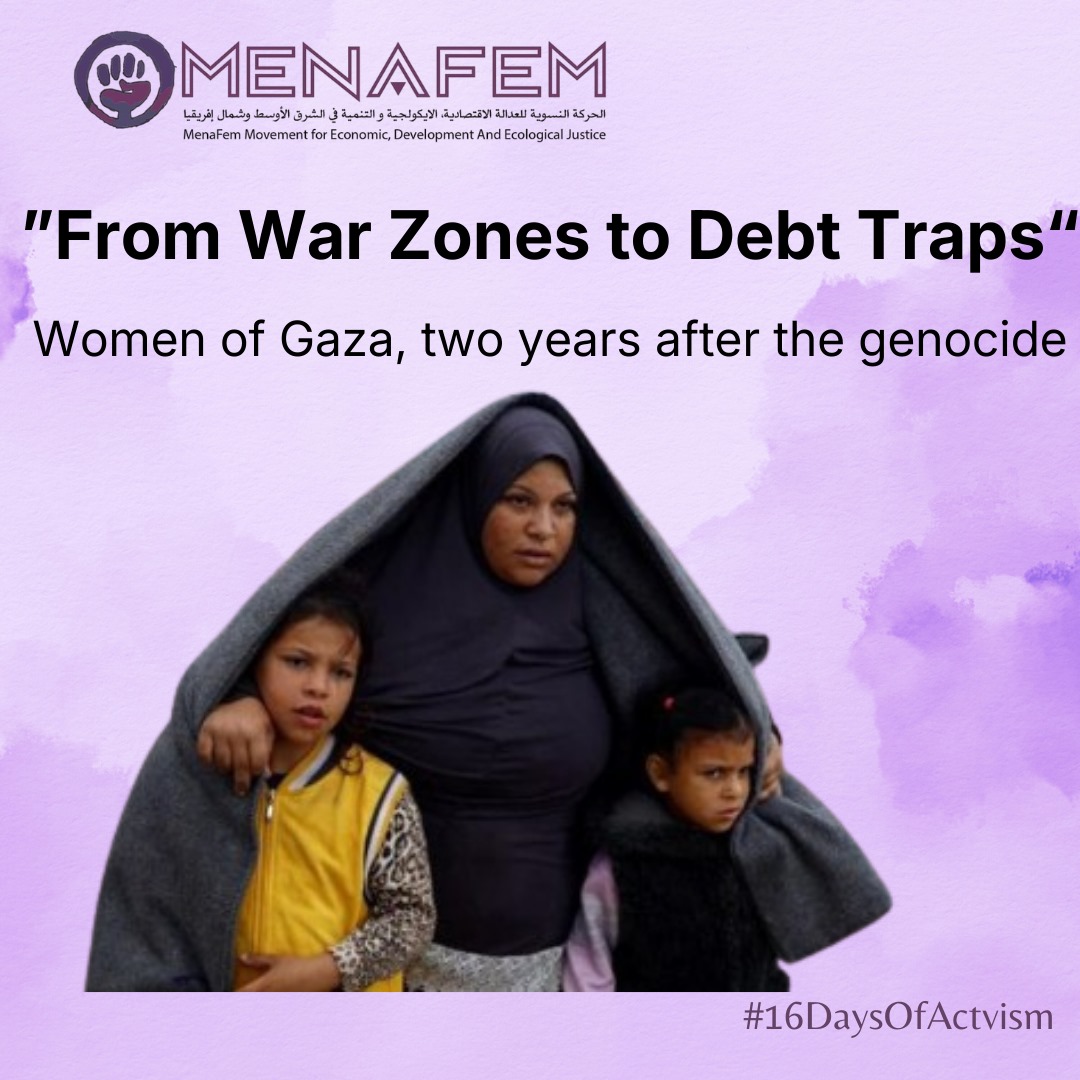Women Between War, Siege, and Sexual Violence in Gaza and Israeli Detention Facilities
Women in Gaza endure an exceptionally harsh reality. They are subjected to systematic violence that has intensified immensely during Israel’s genocidal war, and which shows no sign of ending amidst the absence of any effective UN intervention. The Palestinian Center for Human Rights recently announced that it had obtained several testimonies from Gazan women detained in Israeli prisons, in which they revealed severe sexual abuses including rape, harassment, strip searches, obscene insults, and threats of rape. It is important to note that documenting such violations in the context of armed conflict does not concern isolated incidents only. Rather, it indicates the use of sexual violence as a weapon of intimidation and control, which constitutes a war crime under international law and requires an independent international investigation, particularly given the lack of political will within existing UN institutions.
Over the past two years, Israeli bombardment has targeted reproductive healthcare facilities in the Gaza Strip, including maternity wards and the main IVF clinic. This has worsened conditions for the roughly 60,000 pregnant women, at least half of whom are now classified as high-risk, according to the Palestinian Ministry of Health in Gaza. This systematic targeting of health infrastructure, especially services related to reproductive health, reflects an effort to undermine the community’s ability to recover, given that women are central to maintaining the continuity of daily life.
In addition, the Strip suffers from severe water shortages, and the entire population faces food insecurity. Amid this grim reality, 13,901 Palestinian women who lost their husbands as a result of the genocide bear the burden of supporting their families alone, among the rubble of destroyed homes or in fragile tents that cannot withstand rain or cold. These burdens grow heavier as the economic conditions continue to deteriorate, with food prices rising to four times their usual cost even during the ceasefire that is violated repeatedly and openly before the eyes and silence of the world. This makes securing food nearly impossible for women who have no source of income. This policy of starvation is one of the tools of structural genocide aimed at dismantling the social fabric, with women bearing the greatest burden due to their caregiving responsibilities within families.
In this context, Sima Bahous, Executive Director of UN Women, affirmed that the crisis in Gaza is at its core a crisis of women’s protection. Of the 1.9 million displaced people, nearly one million are women seeking a safe refuge, despite the fact that safety does not exist within Gaza. These dangers affect decisions about displacement, including its timing, route, and destination, due to the threats women may face. Vulnerability extends not only to the roads but also to the absence of effective protection and monitoring mechanisms, leaving women more exposed to harassment and violations during movement and in shelters.
This painful reality that we all witness, too vast in its details to fully recount here, cannot be understood without considering the following:
First: The situation in Gaza today cannot be separated from the settler-colonial project that has shifted from an economy of occupation to an economy of genocide. Nothing taking place is random; it serves a profitable enterprise for several actors, particularly arms manufacturers and technology companies. Gaza has also become a laboratory for developing and testing military and surveillance tools that are later marketed globally.
Second: The events in Gaza lead us to conclude that the international order established after World War II is reaching its end, reflected in the deep erosion of trust in international institutions, foremost among them the United Nations and the International Criminal Court. The international community’s paralysis reveals an unprecedented crisis of legitimacy, where the application of international law depends on power dynamics rather than principles of justice.
Third: Arab populations are not participants in their regimes’ normalization policies. The relatively limited public anger in parts of the Global South compared to the Global North is not due to apathy but to socioeconomic exhaustion and violent censorship that has made daily life unbearable for many citizens. This sense of fatigue and helplessness can sometimes overshadow the urgency of the Palestinian cause. Citizens are not responsible for this; the responsibility lies with austerity policies imposed by major financial institutions aligned with the imperial neoliberal order and which weaken countries’ sovereignty. Despite all of this, waves of digital solidarity and small youth-led initiatives show that awareness of the cause has not been defeated but rather weighed down by the pressure of repeated crises.
#16DaysofActivistmAgainstGender-BasedViolence


